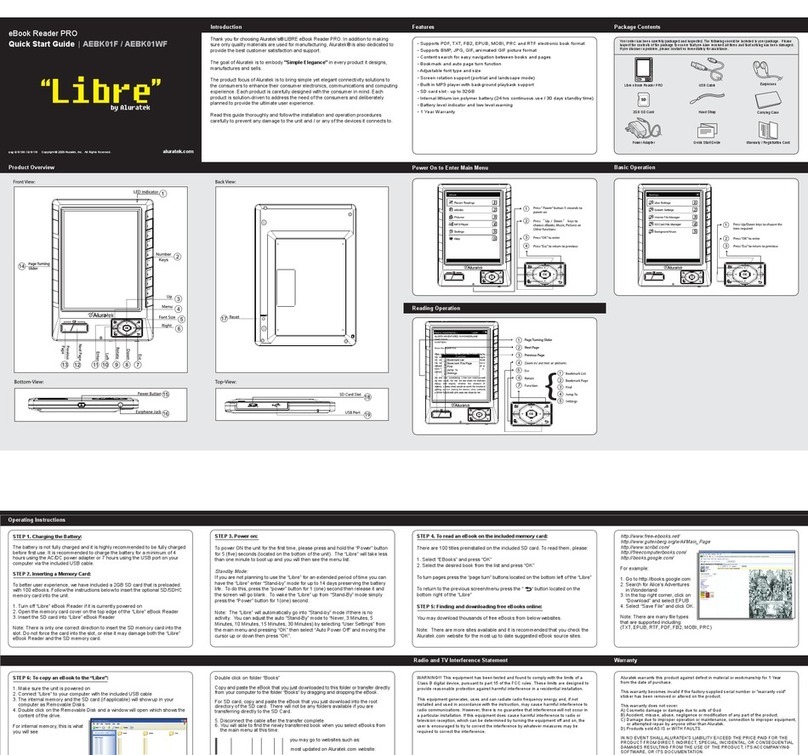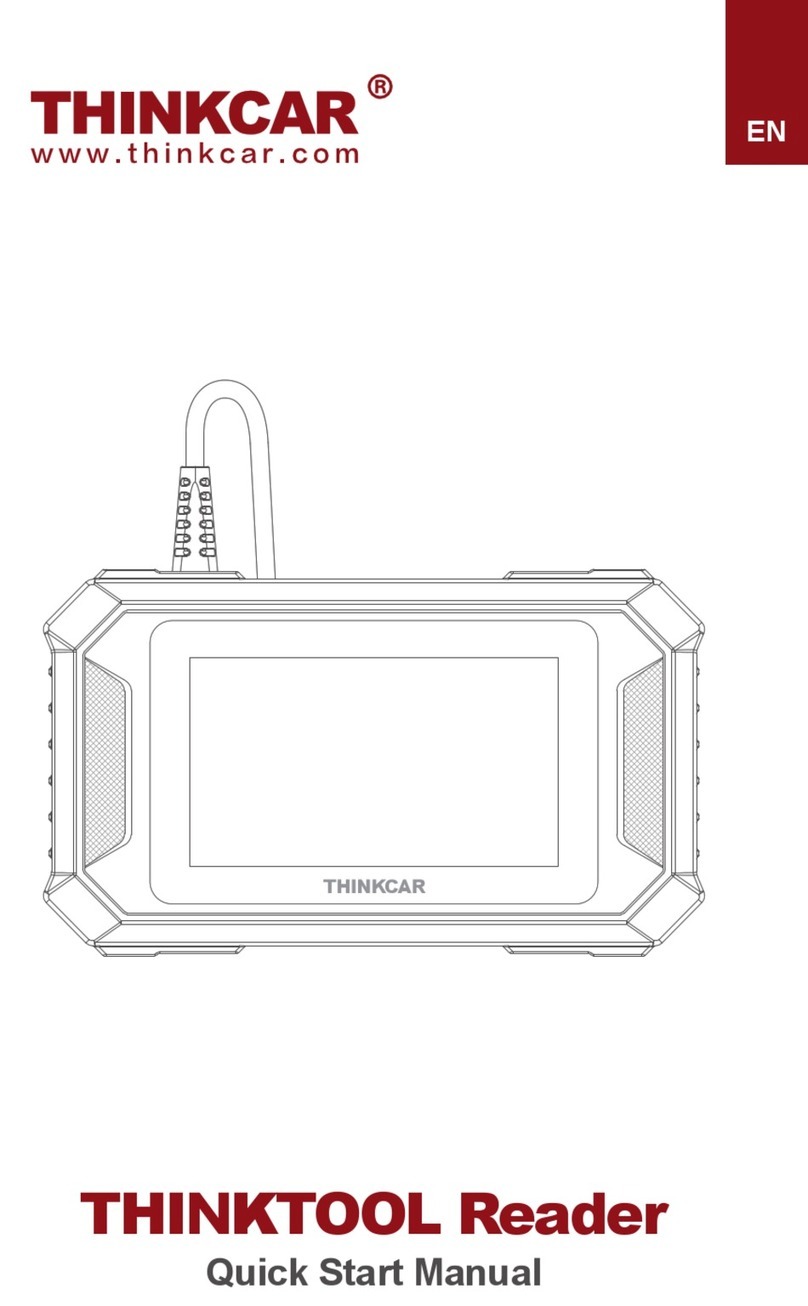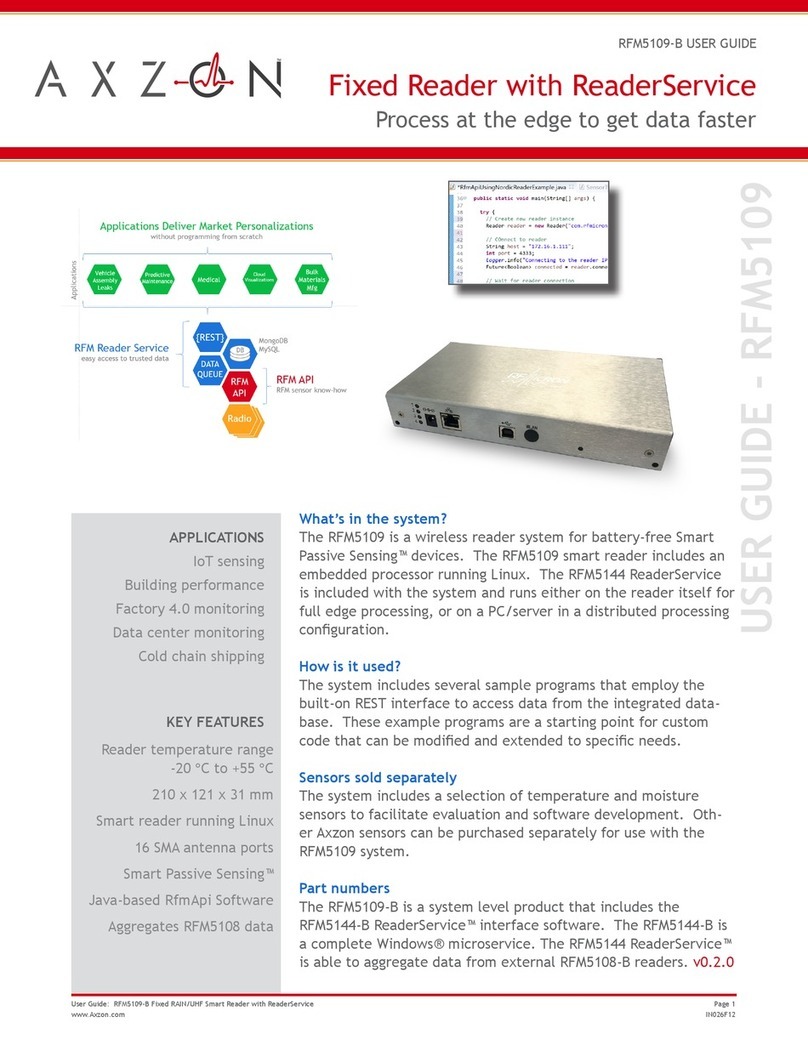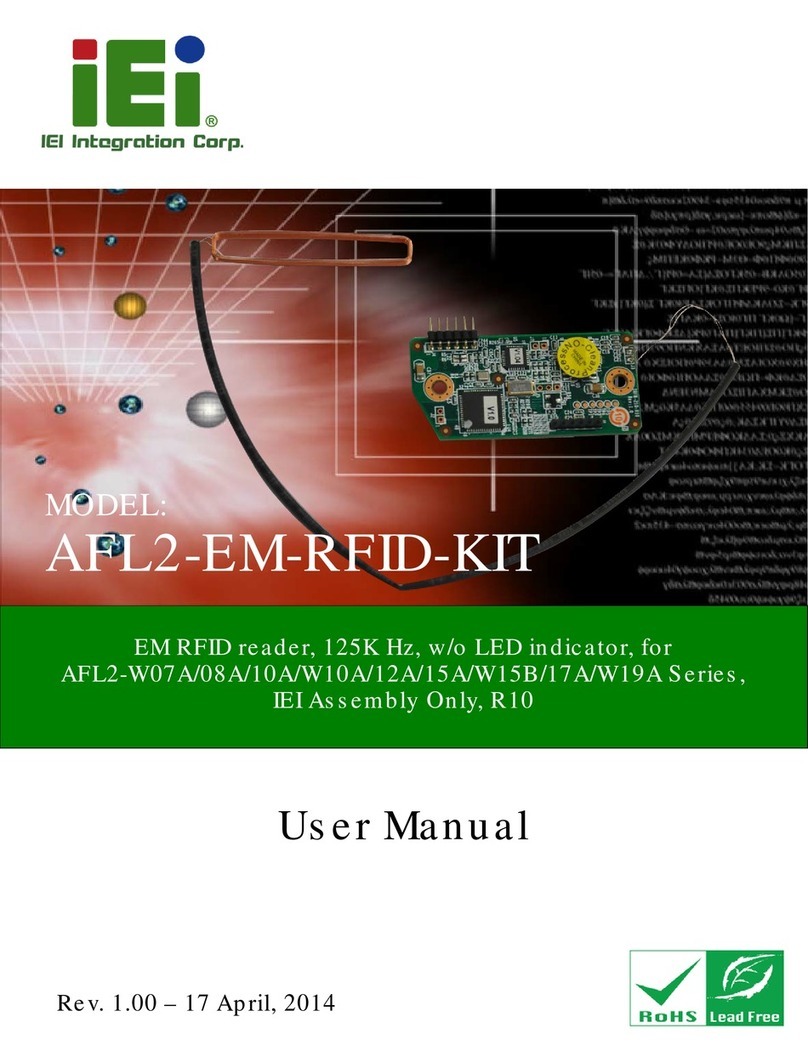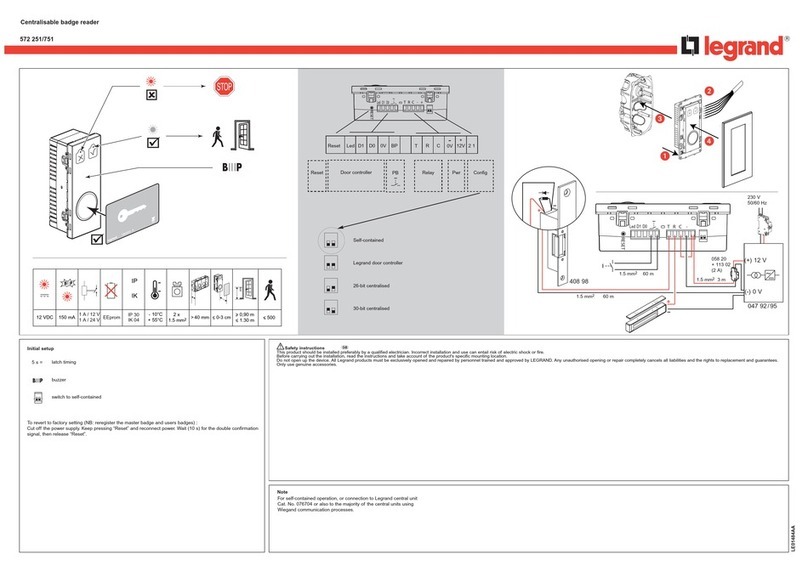MH Corbin LLC OBD-II User manual


M. H. Corbin, LLC OBD-II Vehicle Distance Translator Technical Manual
Version 3.0 Page 2 of 9
Table of Contents
1. Revision History.................................................................................................................. 2
2. Overview............................................................................................................................. 3
2.1. Summary..................................................................................................................... 3
2.2. Concept of Operations................................................................................................. 3
3. Vehicle Distance Translator Installation .............................................................................. 3
4. Calibration........................................................................................................................... 4
5. Recommended Operation of Vehicle................................................................................... 7
6. Troubleshooting.................................................................................................................. 8
6.1. NiteStar DMI is not registering distance....................................................................... 8
6.2. User has to perform the steps listed in Section 6.1 every time vehicle is shut off......... 8
7. Returns............................................................................................................................... 9
1. Revision History
Revision
Number
Details
Date
0.1
Initial Version
8 Jun 2011
0.2
Prototype Version
July 1, 2011
0.9
Pre-release Version
10 Jan 2012
1.0
Release Version
1 April 2013
2.0
Release Version
16 Aug 2013
3.0
Updated Manual for Firmware Release 3.0
15 Mar 2014

M. H. Corbin, LLC OBD-II Vehicle Distance Translator Technical Manual
Version 3.0 Page 3 of 9
2. Overview
2.1. Summary
The M. H. Corbin OBD-II Vehicle Distance Translator (VDT) is designed to translate OBD-2
vehicle speed data into a frequency of digital pulses for use by the NuMetrics NiteStar Distance
Measuring Instrument System (DMI).
2.2. Concept of Operations
The VDT board connects via OBD-II port to the vehicle’s ECU, and via a cable to the
DMI.
Approximately every 500ms, the VDT polls the vehicle’s speed from the ECU via the
OBD-2 port.
oVDT calculates rate of distance being travelled using this speed data from the
ECU
oVDT triggers periodic digital pulses (1 pulse per .9113444 feet travelled) to the
DMI based on the vehicle speed.
oAs the vehicle decelerates/accelerates, the period of the digital pulses is adjusted
to reflect this change in rate at which distance is travelled.
DMI utilizes digital pulses to record total distance traveled.
VDT detects when vehicle has been turned off/on so that user can leave device plugged
in without draining battery.
3. Vehicle Distance Translator Installation
Many vehicles only allow the ECU to communicate when the ignition key is in the ON position.
For best results, the first time the unit is connected to the vehicle, ensure the vehicle is on and
the engine running. This ensures the vehicle’s ECU is fully operational before the VDT begins
attempting communications. Once the unit has been verified to work with the user’s vehicle, the
VDT may be left plugged into the OBD-II port when the vehicle is shut off. To use the VDT:
1. Start vehicle.
2. Pair the OBD-II DMI Translator with the vehicle by connecting it to the vehicle’s OBD-II
port, shown in Figure 1.
Figure 1. OBD-2 port in vehicle.

M. H. Corbin, LLC OBD-II Vehicle Distance Translator Technical Manual
Version 3.0 Page 4 of 9
3. Plug the cable from the OBD-II VDT into the “Power” port of the NiteStar DMI.
4. Power on NiteStar DMI.
5. Calibrate the NiteStar DMI as shown in Section 4 below.
4. Calibration
The DMI works by counting pulses that are received from the sensor. The number of pulses is
different for each vehicle, so the DMI must be calibrated for each vehicle.
The calibration number you find for your vehicle will be the number of feet the vehicle travels
between each pulse multiplied by 1000. This number should be between 400 and 1400. If the
number is outside this range the accuracy of the DMI may be adversely affected.
4.1. Pre-Calibration Procedure
1. Accurately measure a straight road course 1000’ long using a tape measure or similar
device. Mark the beginning and end with a paint mark, stake in the ground, or other fixed object.
2. Check the air pressure in the vehicle tires. Make note of the pressure and recheck each day
before beginning use of the DMI.
3. Drive the vehicle for approximately 5 miles before running the calibration course. This will
help to match the same operating temperatures that the tires will have during normal use.
4.2. Instrument Calibration
1. Insure the DMI is in the FEET unit mode. If not, depress the UNIT key until the DMI display
shows FT.
NOTE: NiteStar Calibration MUST be done in FEET mode.
2. Insure the DMI is in COUNT/HOLD mode and depress the 1 CAL key. The display will show:
If the display is blank, enter 1000 then press MARK/ENTER to save. To return to calibration
mode, press the 1CAL key again.
IMPORTANT NOTE: The NiteStar can store up to 4 calibration numbers for 4 different vehicles.
The display will show you are working on the calibration number for car -1 and at present it is
1000. You may step through the 4 calibration numbers by pressing the DISP/HOLD key.

M. H. Corbin, LLC OBD-II Vehicle Distance Translator Technical Manual
Version 3.0 Page 5 of 9
PROCEED TO THE START OF THE 1,000 FOOT COURSE.
Align a fixed point on the vehicle exactly with the marker for the beginning of the calibration
course. A piece of tape temporarily fixed to the vehicle works well as a reference for the fixed
point.
3. Press the RUN/HOLD key.
4. The display will show:
5. Depress MARK/ENTER. The display will show 0. When the vehicle moves the display will
show the pulses counted. The value displayed is a tabulation of pulses counted by the
instrument and not a distance traveled.
NOTE: The SPEED window will NOT operate at this time.

M. H. Corbin, LLC OBD-II Vehicle Distance Translator Technical Manual
Version 3.0 Page 6 of 9
6. At the end of the 1000 foot course, slow the vehicle carefully so it is exactly aligned with the
end of course marker. When the car is aligned, press the RUN/HOLD key and the number in
the display will become your calibration number for this vehicle, (this number should be
between 400 and 1400). Please write this number in the back of your manual or other
location that will stay with the vehicle.
Once you have recorded your calibration number, press MARK/ENTER and your calibration
number is stored in the DMI. The display should show the course length.
7. Make sure this value is saved by turning the NiteStar off. (Press the ON/OFF key).
8. If this is the first time you have calibrated a DMI, repeat the procedure and see if you get the
same calibration value.
4.3. Calibration Summary (Automatic)
With the instrument in COUNT/HOLD:
1CAL key -
DISP/HOLD - Change car number
RUN/HOLD - <1000’> in current units.
(Enter new course length if needed)
• MARK/ENTER -
Roll through calibration course!
• RUN/HOLD -(New cal number)
• MARK/ENTER to enter calibration number (course length is displayed)
• ON/OFF (Stores your calibration number into memory)

M. H. Corbin, LLC OBD-II Vehicle Distance Translator Technical Manual
Version 3.0 Page 7 of 9
4.4. Calibration Summary (Manual)
To enter in a known calibration number if your vehicle has previously been calibrated.
With the instrument in COUNT/HOLD:
1CAL key -
DISP/HOLD - Change car number
Enter new calibration number (_ _ _ _ )
MARK/ENTER - Will exit calibration mode
ON/OFF (Stores your calibration number into memory)
5. Recommended Operation of Vehicle
Some makes of vehicles contain ECUs which report the speed of travel as the car was several
seconds ago, not the speed currently being travelled. Because the VDT operates using the
speed reported by the ECU, the user may notice during acceleration or braking that the speed
readout on the NiteStar DMI is slightly retarded from the speed the vehicle is actually travelling.
For example, if the user is watching the distance and speed readout on the NiteStar DMI while
starting to drive from a standstill, the distance may not begin registering until a few seconds
after the user has started driving. This is normal operation of the vehicle’s ECU and is not an
indication of a defective unit.
Similarly, if the user is slowing the vehicle down, the distance readout on the NiteStar DMI will
continue incrementing for a few seconds, even after the vehicle has come to a complete stop.
This is normal operation of the vehicle’s ECU and is not an indication of a defective unit.
For vehicles with retarded speed readout, the user is recommended to operate the vehicle
within the following guidelines to ensure accurate measurements:
A. The user ends measurement when the vehicle is travelling approximately the same
speed as when measurement was initiated.
B. The user brakes/accelerates the vehicle with approximately the same force.
Examples of advisable operation follow:
Matt wants to measure the length of a guard rail. Matt pulls up on the side of the road to
the start of the guard rail and configures his NiteStar DMI to start recording distance.
Matt drives to the end of the guard rail, stops, and takes a reading after the NiteStar DMI
has stopped recording distance.
Mike wants to measure the length of a guard rail. Mike is on the highway travelling 50-
60mph and does not want to pull over to make a measurement. Mike begins
measurement of the guard rail, and ends measurement while still travelling 50-60mph.

M. H. Corbin, LLC OBD-II Vehicle Distance Translator Technical Manual
Version 3.0 Page 8 of 9
Examples of inadvisable operation follow:
Matt wants to measure the length of a guard rail. Matt pulls up on the side of the road to
the start of the guard rail and configures his NiteStar DMI to start recording distance.
Matt accelerates to 55mph and drives past the end of the guard rail, stopping
measurement and taking a reading as he passes the end.
Mike wants to measure the length of the guard rail. Mike is on the highway travelling 50-
60mph and does not want to pull over to make a measurement. Mike starts
measurement as he passes the beginning of the guard rail, and decides to pull over at
the end of the guard rail. Mike brings the vehicle to an aggressive stop engaging the
antilock brakes on the vehicle or causing the tires to skid, immediately stops
measurement before the NiteStar DMI has finished incrementing distance, and takes a
reading from the NiteStar DMI.
In the scenarios listed as inadvisable operation, the trip is not “complete” from the perspective of
the NiteStar DMI due to the delay that exists between a change in the vehicle’s actual speed,
and when the vehicle’s ECU has recognized this new speed.
6. Troubleshooting
Recommendations to troubleshoot several potential issues are presented below:
6.1. NiteStar DMI is not registering distance
Please have the user perform these steps:
1. Ensure the vehicle is in the on state and engine running.
2. Unplug the OBD-II VDT from the vehicle,
3. wait 5 seconds,
4. and plug it back in.
5. Next, ensure the OBD-II VDT is plugged into NiteStar DMI’s “POWER” port and
not “DATA” port.
6. Ensure the NiteStar DMI is not displaying “Count Hold” or “Display Hold” and is
otherwise operating properly (see your NiteStar DMI operation guide / user’s
manual to verify proper configuration).
7. Drive vehicle.
If NiteStar DMI is still not registering distance, follow the steps listed under Section 7
“Returns” to have the user return the device to the dealer for a replacement. If the
replacement also does not work, the vehicle may not be supported (unless the vehicle
was manufactured prior to January 1st 2000, this is unlikely). If the replacement does not
work, the dealer should record the make, model and year of the vehicle the user is using
the device in, and inform M. H. Corbin. of this data.
6.2. User has to perform the steps listed in Section 6.1 every time vehicle
is shut off
Dealer should record the make, model and year of the vehicle the user is using the
device in. In addition, if possible, obtain a voltmeter reading of the battery voltage of the

M. H. Corbin, LLC OBD-II Vehicle Distance Translator Technical Manual
Version 3.0 Page 9 of 9
vehicle while it is running, and after the engine has been shut off. Notify M. H. Corbin. of
this vehicle data.
7. Returns
If the user is unable to get the VDT to operate in their vehicle after following the steps listed in
Section 6.1 “NiteStar DMI is not registering distance”, instruct the user to perform the following
steps before returning the device to the dealer:
1. Start vehicle
2. Allow vehicle to run for 15 seconds
3. Plug VDT into the vehicle
4. Wait 30 seconds.
5. Unplug the VDT from the vehicle.
These steps will ensure the VDT is storing the most up-to-date messages and records from the
vehicle, which will later be analyzed by M. H. Corbin. to determine the source of malfunction. If
the device has not been plugged into any other vehicle besides the one in which the user
desires to use the device with, performing these steps is not mandatory.
Table of contents





